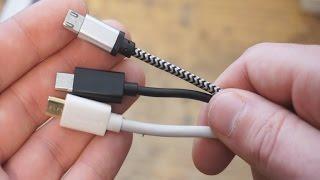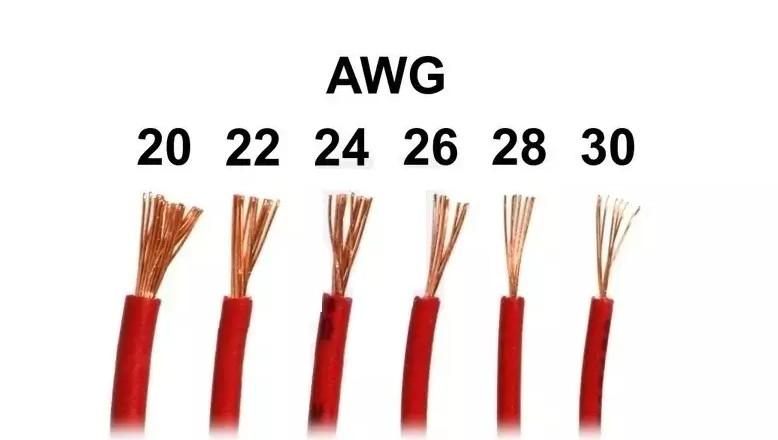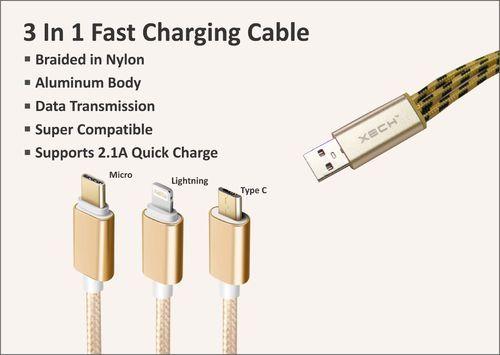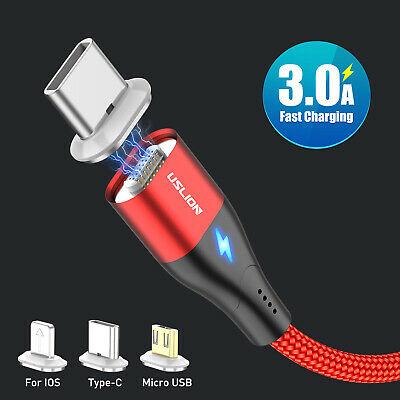Consider yourself lucky if you have an ultra-fast charging cable!
Our profuse use of smartphones calls for a large battery capacity, complete with the ability to charge quickly. Thanks to Quick Charge technology and other proprietary rapid charging technologies from numerous OEMs, a few minutes of charging can offer enough battery juice for hours of smartphone usage.

While your device may come equipped with fast charging technologies by default, the accessories you use to charge it also play a role in how quickly (or slowly) it charges. Cables differ in terms of charging speed, durability, length, pricing, and other features. In this article, we’ll tell you how to identify a fast charging cable.
Fast Charging Cables Vs. Regular Charging Cables
Even though they are not physically distinguishable, there are different varieties of USB cables. Yes, USB cords affect how quickly your device's battery charges to 100%. To get the fastest charging speed from a device with quick charging technology, you usually need to use a fast-charging power brick and a fast charging cable.
But what makes a standard cable different from a fast-charging cable? At any given time, the amount of power is transferred to your device's battery. Fast charging cables can deliver more current to fill up your battery's capacity faster than conventional cables.
Regular USB cords deliver roughly 2.5 watts of electricity to your smartphone's battery, whereas fast charging cables can deliver up to 120 watts of power (depending on the manufacturer and type of your smartphone). You will not receive fast charging speed if you use a conventional USB cable and a fast-charging power brick/adapter to charge a smartphone. This is because the amount of electricity a conventional cable can transfer to a device is restricted.
Now that you know the difference between fast and regular cables, let’s move on to identify a fast charging cable.
How to Identify a Fast Charging Cable
As previously stated, the quantity of electricity a cable can transport determines how quickly it charges. This is proportional to the size of the wire within the cable; it's just physics. Because a wire's current carrying capacity is limited, a larger wire can carry more current.
A typical USB cable's wires are usually standard-sized 28 gauge wires; however fast charging cables include bigger/thicker 24 gauge wires, allowing more current to be given to a battery of the same capacity.
For a clearer visual representation of the size difference between a 28 gauge wire and a 24 gauge wire, see the image below.

Regular USB cables include standard wires that can transport roughly 0.5A of current, whereas rapid charging cables can carry higher currents (2A or more).
But that’s just one thing!
To identify a fast charging cable, you must look at some other factors as well. Here are a few simple ways to do it.
1. Take a Look at the Label/Description
Some cable manufacturers make it quite easy for customers to identify the sort of cable they are going to purchase. When choosing a cable, look for anything that indicates the cable supports rapid charging on the logo, label, or description. Some cables are labeled as rapid charging/quick charging, so that (possible) consumers are aware of what they're getting into.

2. Examine the Cable's Amperage
The amperage is another item to look for on a cable to see whether it's a quick charging cord. Fast charging cables, as previously stated, are capable of carrying currents of up to 2A. If you need to purchase a fast charging cable, be sure it is labeled to accommodate 2A of current or the particular current that your smartphone requires.

3. Thicker Cables
Fast charging cables include broad wires inside; thus, it's a frequent misconception that thicker cables charge faster than skinny cables. This is occasionally accurate, but it isn't always a good technique to spot a fast charging cable. However, you should avoid buying fragile cables for obvious reasons.

4. Shop from Official or Certified Stores
Buy cables from recognized merchants i.e. "Syncwire" to save the difficulty of identifying and distinguishing a conventional cable from a fast-charging wire, ideally, the store of your smartphone manufacturer. This is due to the fact that several OEMs have their rapid charging standards and cable specifications. You'll get a genuine fast-charging cable if you buy accessories from your smartphone manufacturer.
Wrapping Up
A wrong charging cable can slow down charging speed, and you certainly don’t want that. Always search for a 24 gauge USB cable when purchasing a fast charging cable. The 24AWG cable will charge your device faster, and this is the type of USB cable that is customarily supplied when you purchase a tablet or smartphone.
Keep in mind the tips above and learn how to identify a fast charging cable for your smartphone. For tips and tricks similar to this one, visit our blog today.







leider hat das Kabel keinerlei Beschriftung aber 1 x USB A und 1 x USB C, es ist aber nicht sehr dick. Ist das nun ein Schnelladekabel, oder nicht? Eine Verpackung gab es dafür nicht, weil es zu meinem Höwding Airbag gehört.
Qui use l’électricité : le câble ou la prise?
Hallo i h habe mir ein schnelllade Kabel bestellt und merke das es ewig dauert bis es geladen ist .Nun habe ich eure Seite entdeckt um mich aufklären zu lassen ,was ich nach langem lesen leider nicht verstehen kann was ich eigentlich gekauft habe. Die Aufklärung hat mir nicht geholfen. Schade